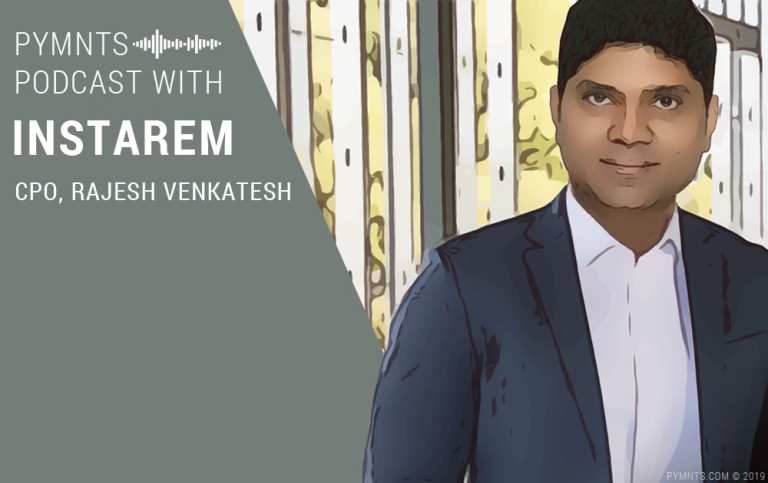Push payments have been a topic of conversation in the developed world for the last several years, across verticals and use cases. Riding the card rails in reverse has unlocked new opportunities to enable more efficient payments to policyholders from insurance companies, from consumers and businesses to gig workers, and from alt lenders to consumer and SMB borrowers. The P2P use case is perhaps the most well-known and widely used, giving non-bank players, in particular, new tools to enable payments between people, using a debit card as a proxy for those transfers.
For these consumers and businesses, the notion of using a debit card as a proxy for receiving a payment is second nature – almost everyone has them, and they know how to use them. Receiving a payment that way, using those trusted rails, is not a big leap.
But in the developing world, using cards to pay at an online merchant is not so much the status quo, Rajesh Venkatesh, chief product officer at InstaReM, told Karen Webster.
In the developing world, entering card information online at merchant checkout is an anxiety-ridden experience. From the consumer’s perspective, there is concern that the merchant may not safeguard their card information. The card issuer is also suspicious of digital transactions (and the fraud often associated with them), so is just as likely to deny online card payments as to accept them.
Push payments offer a practical solution for consumers, merchants and issuers.
“Push payments solve for a lot of those anxieties, because the consumer is pushing the funds to a merchant account, so the only data being transferred online is the merchants’,” Venkatesh noted.
Advertisement: Scroll to Continue
Customers are already accustomed to giving a payment to a merchant on their terms, and they feel more in control of this type of transaction. Most importantly, it is not reliant on a merchant site being secure enough to safeguard their data.
“It makes it easier for people [in the developing markets] to make the jump into the digital divide,” Venkatesh said, noting that the benefit is not just from consumers to businesses, but also between businesses.
Expanding Possibility for Businesses
The problems for business-to-business payments for developing world players, Venkatesh noted, are many and well-known.
The transactions are often cross-border, and the partners in trade don’t know each other very well. The cross-border payment process is a bit of a black box — when funds will arrive and how much the trip to the intended business will cost remain unknown factors.
Venkatesh explained that push payments — simply by virtue of being built on newer technology — are faster, more transparent and more predictable. They can also offer a non-card-based solution to paying with current funds instead of credit. That is critical in the developing world, where interest rates are higher and the use of credit is limited to cases of need.
Moreover, he noted, on the B2B side of payments in the developing world, they are increasingly finding that push payments aren’t only useful or cost-saving when businesses pay other businesses, but they also make it easier for them to transact with their own workers.
The most obvious extension of that is in payroll management, when it comes to paying both employees and temporary gig workers. Cash is expensive to manage and risky to hold for merchants — issuing pay cards and pushing funds directly and instantly is more secure, more efficient and vastly preferred by workers. But, Venkatesh pointed out, it is also relevant to managing how and when employees are able to spend company funds. Quite often, he noted, the worker going to the store and the employee tasked with paying the bill are not the same person, and if a supplier needed to be paid in cash on the spot, loading someone up with cash and sending them on their way was historically the best option. The emergence of push payments is removing all that risk and uncertainty — the employee arrives to pick up supplies, and the firm’s designated payer pushes funds to the supplier.
But for all that push payments can do for businesses, Venkatesh continued, it is easy to get swept up in the potential and overlook the fact that actualizing it will take some time. Cash-on-delivery (COD) systems — in both B2B and C2B payments — are long-established and entrenched, he noted. They aren’t going anywhere overnight, which means even firms looking to be on the cutting edge of push payment options need to keep one foot planted in the past.
“Businesses that want to grow their systems actually need to offer a lot of choices, as there is still going to be need for cash-on-demand offerings.”
The Change the Future Requires
Where developed and developing economies share a common use case is in P2P, but in developing economies it has a cross-border twist to support disbursements for migrant workers.
Though not as far along as it could be, Venkatesh told Webster that P2P has incredible potential to accelerate the speed at which money moves, while reducing the cost to move it.
“Many migrant workers are going to other nations for low-wage jobs, and when they pass their funds, they are subject to massive fees,” he said. “The estimates say that on a $200 transaction, they are paying 7 percent in costs to pass their funds. That can be significantly reduced using card rails, because these are transfers between people who know each other.”
But potential, though powerful, is not enough to really accelerate what push payments can do in the developed world. To flourish, they need support from financial institutions — and those FIs still have much to learn about how to serve these unique user groups in the developing world.
From there, Venkatesh said, they face the dual challenges of offering these groups a lot of choices, depending on their needs, as well as offering a lot of guidance on how to optimize those choices across the board, across consumer commerce, B2B transactions and P2P disbursements. There is a lot of complexity to sift through, particularly given how many developing world payments of all stripes are cross-border.
Financial institutions are truly beginning to catch on to this, he noted, which is a positive sign — though there is a lot to be done. Ultimately, Venkatesh said, the work will get done, because in some sense, it must.
“In the immediate context, the need might not have been obvious for financial institutions, but as their customers are trying to grow all over the world, their need to offer new types of services across the board will only get more obvious,” he said.
It won’t be built over night, because the context of commerce in the developing world is so different — particularly when it comes to the evolution of digital payments over the last three or four decades. But it is already being built right now, Venkatesh noted, and is evolving quickly and in real time to the needs of the developing economies it serves.




